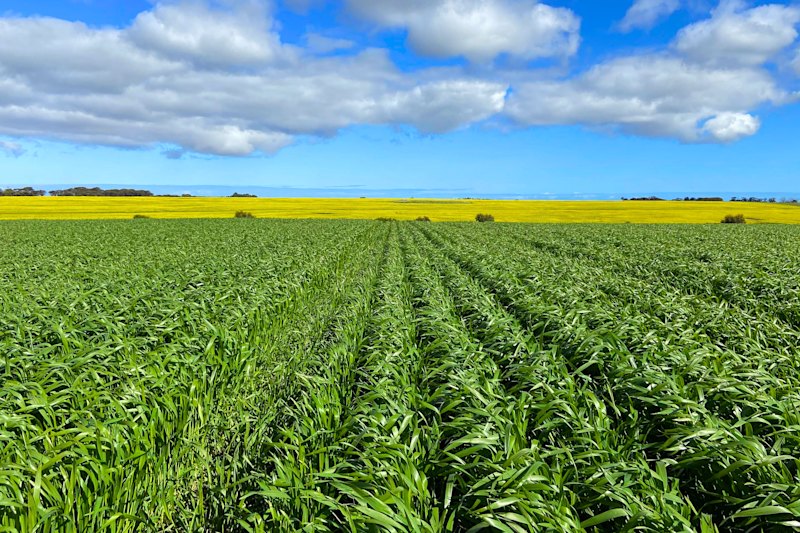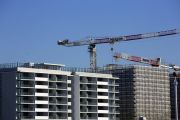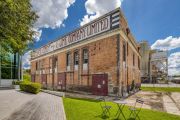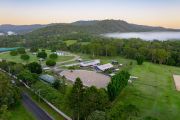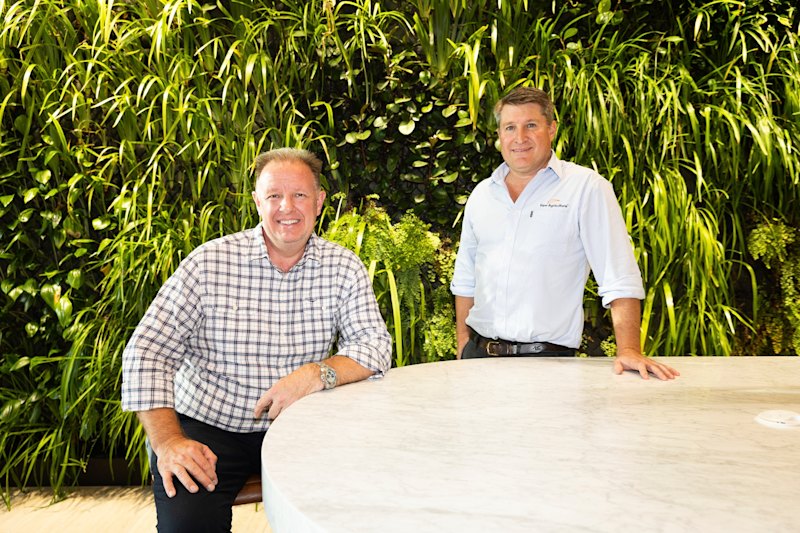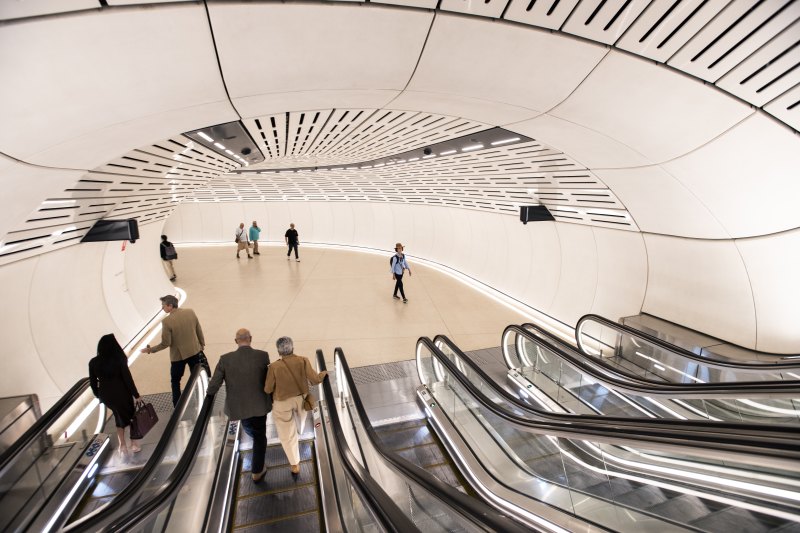
How Sydney Metro’s architects made train stations people actually like
It’s been a week of celebration in Sydney. The first new train crossing of the harbour since the famous “coathanger” bridge opened in 1932 has prompted Sydneysiders to look at their city in a new light.
Instagram reels and TikTok videos are ablaze with clips of first views and journeys. Politicians have been full of bipartisan joy, with Labor Premier Chris Minns crediting Liberal predecessor Gladys Berejiklian for pushing for the “city-shaping” Sydney Metro project, a 15.5-kilometre tunnel that connects Sydenham in the city’s south with Chatswood in the north.
But seven new stations are where Sydney is changing the most.
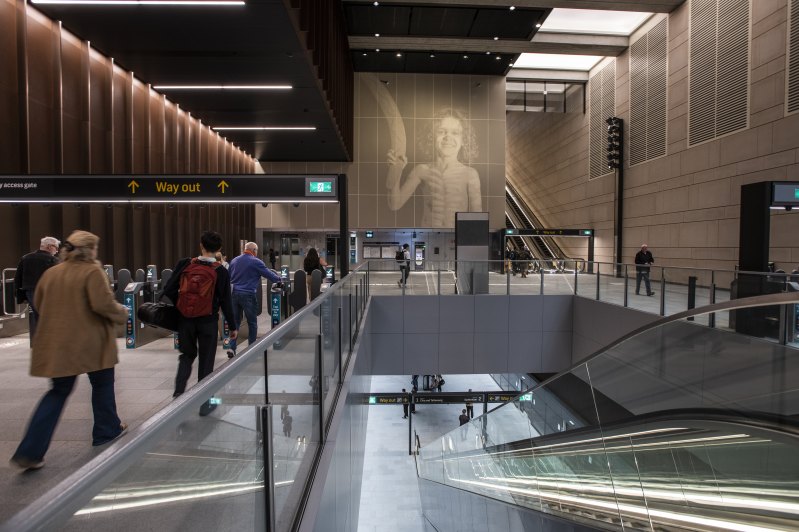
The cavernous, curvaceous, sensual stations – some channelling sunlight to concourses more than five storeys deep – create a new secular point of communion for the city.
“When Paris built the Notre Dame, it was a source of civic pride and homage to a greater glory,” says architect and urban designer Matthew Pullinger.
“The stations are cathedrals of the 21st century. Sydney has just built seven of these underground cathedrals. It’s a massive undertaking.”
Even the people who built them are impressed. Lendlease development head Tom Mackellar, who oversaw construction of the Victoria Cross Metro Station and above-ground precinct in North Sydney, set foot in Barangaroo Metro Station on Monday morning.
“I felt like I was in a different city,” Mackellar says. “It felt like I was in London, to be honest – jumping on a new Tube line. I felt like finally we have world-class infrastructure in Sydney.”
But it’s also a very local experience. The stations were designed by different groups of architects, but all incorporate the sandstone aesthetic of Sydney’s earliest buildings and churches.
The Martin Place Metro Station entrance includes graphite, like the banking institutions around it. In fact, it uses the same graphite from a mine in Finland as the neighbouring buildings that were built a century ago.
The Metro that opened on Monday after seven years of construction isn’t just about public transport. It’s a spark for the renewal of Australia’s largest city, Pullinger says.
“The project’s collapsed space and time,” says Pullinger, taking AFR Weekend on a tour of the metro. “It’s making the city more accessible, more welcoming and more equitable to people of all walks of life.”
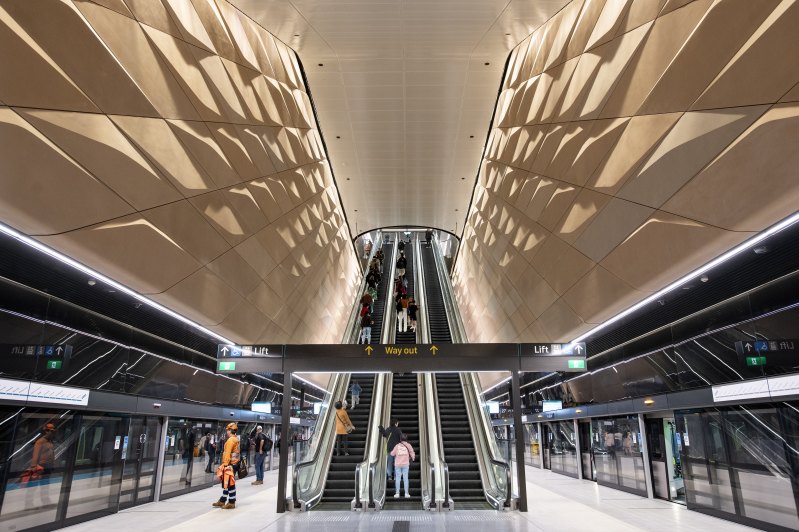
The real estate and employment implications are huge. Barristers, for example, will no longer need chambers in their traditional base of Martin Place, as they can have an office in North Sydney and still make court in 10 minutes, thanks to the new metro running every four minutes at peak times, Pullinger says.
Fast facilities
Cox Architecture director David Holm led the design of Victoria Cross Metro Station. Holm is used to drawing up airports, but says metro-scale train stations are very different.
“We do airports – they’re slower in cadence,” Cox Architecture director Holm says. “Trains are very much about fast decisions. People might be going fast, or be running late. They’ve got time pressures.”
But the grand stations aren’t intimidating. Obvious and not-so-obvious signals guide commuters – such as red detailing in the ceiling at the Grimshaw Architects-designed Martin Place Metro Station guiding towards the city centre and blue detailing heading towards the harbour.
The stations are designed to be safe. Barriers encase trains behind protective screens that seal off the track, preventing people from falling onto platforms.
Long walkways are well lit. “Lighting’s important,” says Holm’s colleague, Cox associate director Kate Macdonald. “There’s a lot of light, bright colours. They’re wide spaces – nothing’s too tight. You don’t feel like you’re in an enclosed space. All the transition spaces are designed for fast movement.”
Blind corners have been omitted as much as possible and surfaces kept sheer. Services such as fire sprinklers are hidden behind walls to keep public space free of protrusions that could provide hiding spaces.
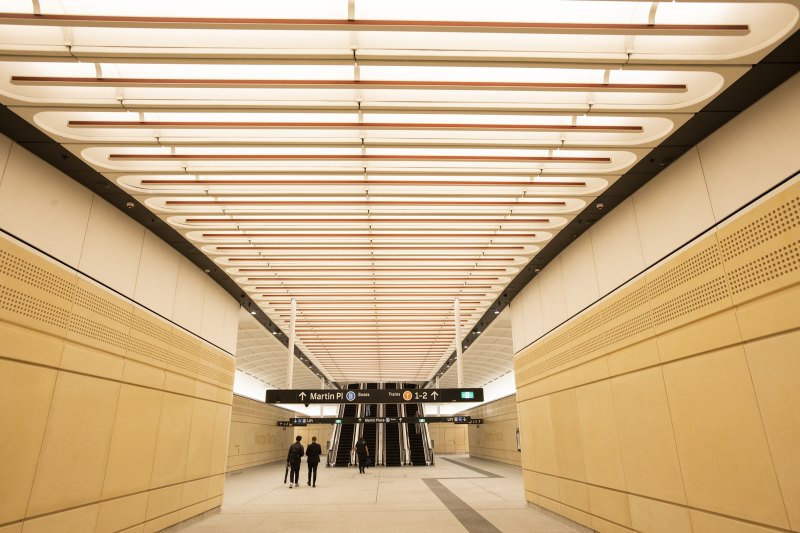
“There are no nooks and crannies,” Macdonald says.
There’s also a clear difference from every other train station in Sydney – no advertising. But that will change. Only half of the 40 planned digital advertising screens across the network have been installed so far, Sydney Metro CEO Peter Regan said this week.
Pullinger, who consulted to Sydney Metro in the early planning stage of the project, dislikes the term “over-station development” for the towers going up on top of Sydney’s new stations.
“Integrated” station development is a better term, he argues, as building fundamentals such as structure and services needed below and above the ground are inseparable and have to be considered simultaneously.
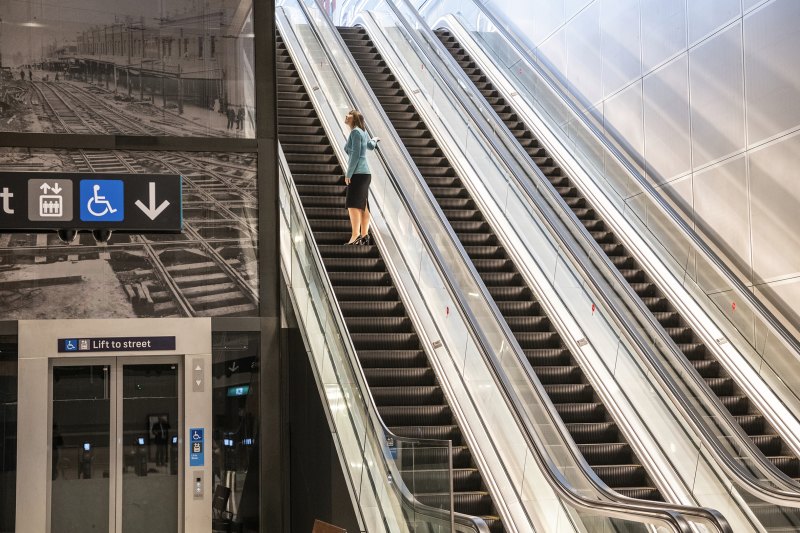
“They have to be done together,” Pullinger says.
The $21.6 billion Sydney Metro City & Southwest section – the official price includes a westbound extension from Sydenham to Bankstown that will replace the existing T3 Bankstown line – connects in the north with the Metro Northwest that opened in 2019, joining Chatswood with Rouse Hill.
In 2026, the $11 billion Metro Western Sydney Airport will connect the existing St Marys Station on the T1 western line with the new airport. In 2032 – and after a further $25.3 billion – a separate Metro West section will connect Parramatta with a new station at Hunter Street in the Sydney CBD.
In North Sydney, where passengers make their way to the surface from a platform 40 metres underground, a new retail precinct with 15 outlets including Marrickville Pork Roll, Dopa restaurant, Torotoro Ramen Bar, a nail salon and florist, is open.
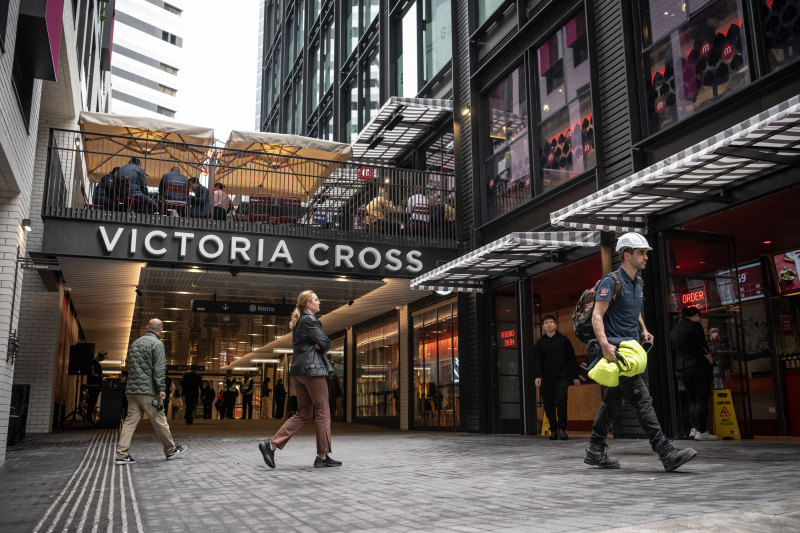
“We’ve handpicked who we want in there, not just for workers coming in from Monday to Friday but on weekends,” says Lendlease’s Mackellar.
“We’re striving to activate [cities] not just Monday to Friday but all through the weekend. The retail provides for that opportunity.”
People use the stations in different ways. At the John McAslan + Partners-designed Waterloo Metro Station, an older woman takes her time to enter, inspecting the artworks built into the station’s interior.
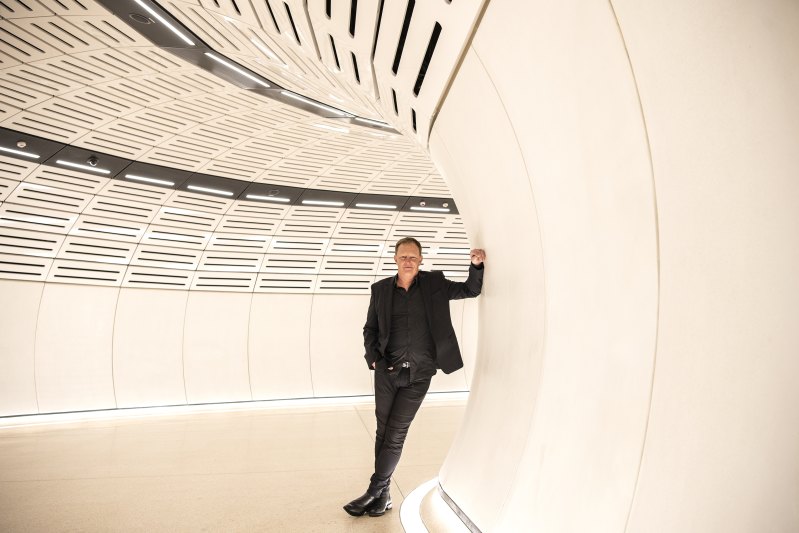
She rides the escalator down to the concourse, then turns and looks up at sunlight streaming down through light panels in the ceiling. On an adjacent wall is a 9.7-metre image of a young local Indigenous dancer called Roscoe. Perforated panelling at the concourse level depicts the local banksia scrub.
The Metro is also about civic beautification, public art and lifting the human spirit, Pullinger says.
“Everyone can use these spaces,” he says. “They’re very public.”
What architect, what station:
- Crows Nest Station – Woods Bagot
- Victoria Cross Station – Cox Architecture
- Barangaroo Station – Foster + Partners with Architectus
- Martin Place Metro Station – Grimshaw
- Gadigal Station (Pitt Street) – Foster + Partners, Cox Architecture
- Central Station Metro upgrade – Woods Bagot, John McAslan + Partners, GHD
- Waterloo Station – John McAslan + Partners
- Sydenham Station Metro upgrade – Hassell with GHD


